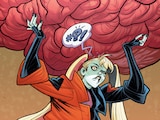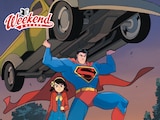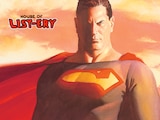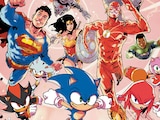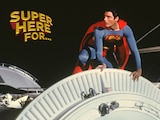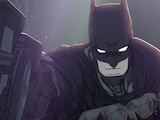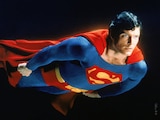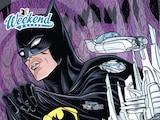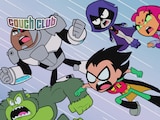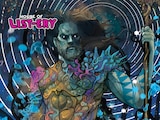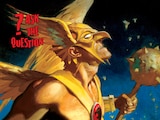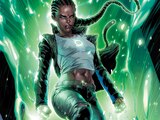The best thing about DC’s Crisis stories is that they’re a celebration of the past, present and future of the DC Universe. Justice League: Crisis on Infinite Earths – Part One is certainly no exception. What I’m most invested in when it comes to Crisis-level stories is their meta-narrative. That is, I’m interested in how the biggest possible DC stories understand the universe they’re playing in. As a fan, my specific conception of the DC Universe probably looks a lot different than someone else’s, whose interests may lie in different areas than mine. I’ve forged my own experience within the grand DC sandbox with my personal reading and viewing habits. So whenever I have the chance to step outside of my own personal comic book Fortress of Solitude, where I can scream about how incredible Orion and the rest of the New Gods are, I’m a wide-eyed tourist.
Justice League: Crisis on Infinite Earths – Part One is perfectly suited for someone like myself. When I first took my Tom Cruise nosedive into the rabbit hole of being a DC fan, my descent was powered by the urge to understand everything about the DC Universe. Sure, I loved individual characters (hi, Nightwing), but it was the stunning array of lore that fueled my interest. There was a history behind all of these characters and places that I wanted to understand immediately. I mean, how can you look at someone like Big Barda and not want to learn everything about her right away?

All of this is to say that Justice League: Crisis on Infinite Earths – Part One offers some fascinating slices of disparate parts of the DC Universe, just like the original Crisis on Infinite Earths comic series by Marv Wolfman and George Pérez. Most animated DC films tend to focus on a small group of characters, which makes sense, but the array of characters in Crisis Part One is like candy for my brain. Seeing Green Arrow on the Justice League got me excited enough, but getting to see Ted Kord’s Blue Beetle and Kimiyo Hoshi’s Doctor Light in all their glory had me jumping in my seat.
The collection of heroes that Harbinger gathered for the Monitor was a playful throwback to the days of Who’s Who in the DC Universe, a series of encyclopedic comics that came out around the same time as the original Crisis on Infinite Earths. I found myself pausing the film, craning my neck towards the screen, trying to identify everyone in frame. The sight of Wildcat, Obsidian, Blue Devil, Jade, Firestorm, the Question, Blue Beetle, Kamandi, Doctor Fate, the Creeper, Swamp Thing and Mister Terrific all together in one place had me grinning.

In keeping with the diverse texture of the DC Universe, I loved how Crisis Part One kept the tone of characters like Blue Beetle and the Question consistent with their past appearances in animated shorts. They both speak like they are from old Hanna-Barbera cartoons. For myself as a fan constantly coming to terms with his love for Ted Kord, seeing my favorite goofy scientist interact with the likes of Batman and Aquaman was such a joy.
And that’s precisely the beauty of the DC Universe. There’s something here for everyone. The fact that you could see characters like Blackhawk appear alongside Zatanna, Uncle Sam, Peacemaker and Dawnstar in the same film hammered home to me the power in nurturing such a varied universe. Personally, I’ve never been particularly interested in only one type of superhero, or one heroic context. The contrasts between all of these characters speak to the evolutionary nature of the DC Universe. It’s something that builds upon itself, as opposed to digging the same hole in the same genre. And the Monitor himself reveals that he gathered such a diverse group precisely because of the individual skills that they bring.

As such, Justice League: Crisis on Infinite Earths – Part One is truly a celebration of everything that makes the DC Universe what it is. The alternate Earths from the multiverse come to represent the spirit of possibility that has underlain DC stories from the very beginning. There is no universe I’d rather spend time in than one where Batman watches CCTV footage of Green Arrow stubbing his toe.
Justice League: Crisis on Infinite Earths – Part One is now available on 4K Ultra High Definition in limited edition steelbook packaging, standard Blu-ray and Digital. Justice League: Crisis on Infinite Earths – Part Two is coming soon.
Jules Chin Greene writes about comics for DC.com, and his work can also be found at Nerdist, Popverse and Multiverse of Color. You can follow him on Twitter and Bluesky at @JulesChinGreene.
NOTE: The views and opinions expressed in this feature are solely those of Jules Chin Greene and do not necessarily reflect those of DC or Warner Bros. Discovery, nor should they be read as confirmation or denial of future DC plans.



